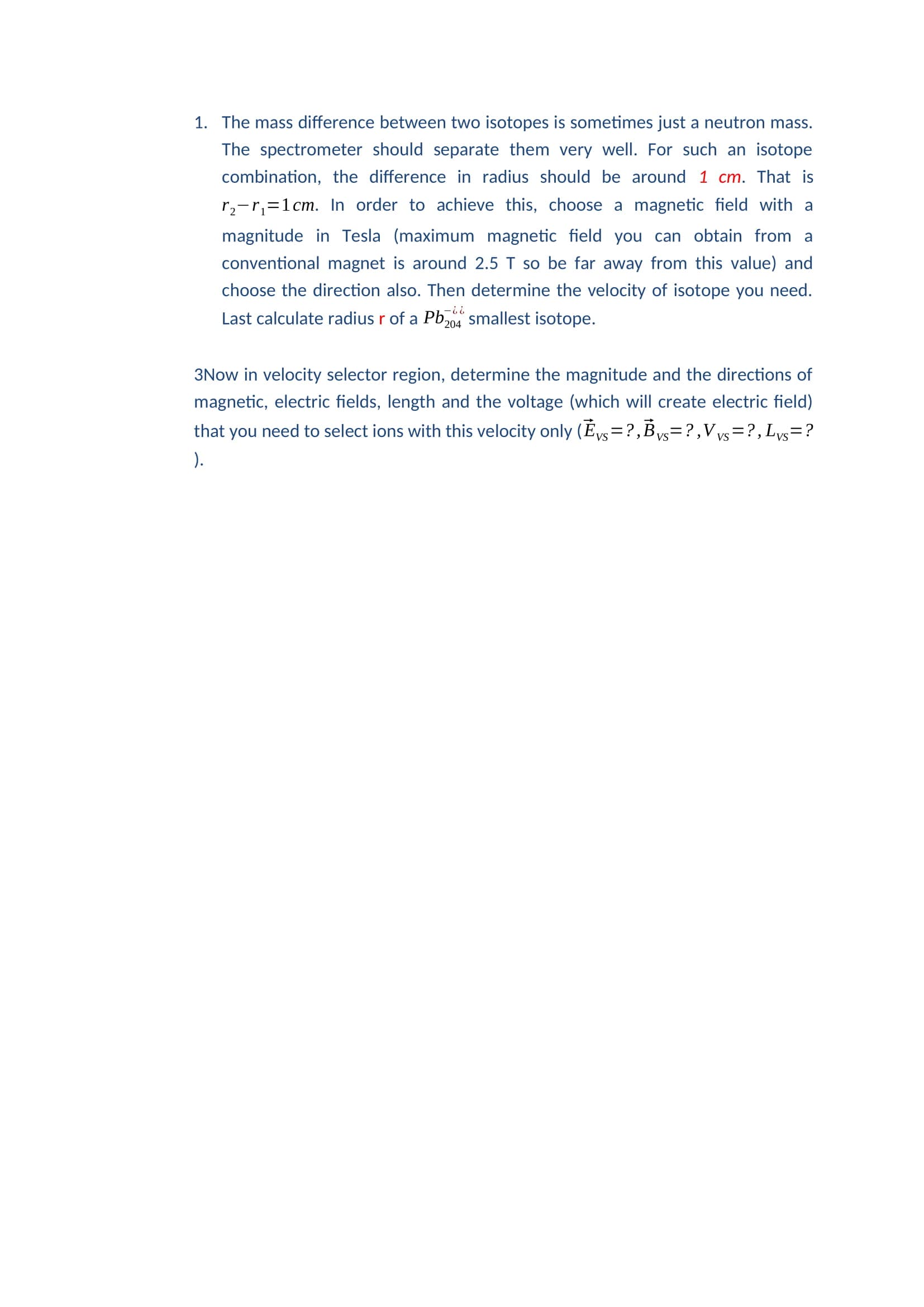The mass difference between two isotopes is sometimes just a neutron mass. The spectrometer should separate them very well. For such an isotope combination, the difference in radius should be around 1 cm. That is rz-r,=1cm. In order to achieve this, choose a magnetic field with a magnitude in Tesla (maximum magnetic field you can obtain from a conventional magnet is around 2.5 T so be far away from this value) and choose the direction also. Then determine the velocity of isotope you need. Last calculate radius r of a Pb04 smallest isotope.
The mass difference between two isotopes is sometimes just a neutron mass. The spectrometer should separate them very well. For such an isotope combination, the difference in radius should be around 1 cm. That is rz-r,=1cm. In order to achieve this, choose a magnetic field with a magnitude in Tesla (maximum magnetic field you can obtain from a conventional magnet is around 2.5 T so be far away from this value) and choose the direction also. Then determine the velocity of isotope you need. Last calculate radius r of a Pb04 smallest isotope.
Related questions
Question
I need the answer of that 3rd question but it's connected to the first question which I added as an image. Can you solve the 3rd question using the first questions data

Transcribed Image Text:The mass difference between two isotopes is sometimes just a neutron mass.
The spectrometer should separate them very well. For such an isotope
combination, the difference in radius should be around 1 cm. That is
rz-r,=1cm. In order to achieve this, choose a magnetic field with a
magnitude in Tesla (maximum magnetic field you can obtain from a
conventional magnet is around 2.5 T so be far away from this value) and
choose the direction also. Then determine the velocity of isotope you need.
Last calculate radius r of a Pb04 smallest isotope.

Expert Solution
This question has been solved!
Explore an expertly crafted, step-by-step solution for a thorough understanding of key concepts.
Step by step
Solved in 6 steps with 7 images
